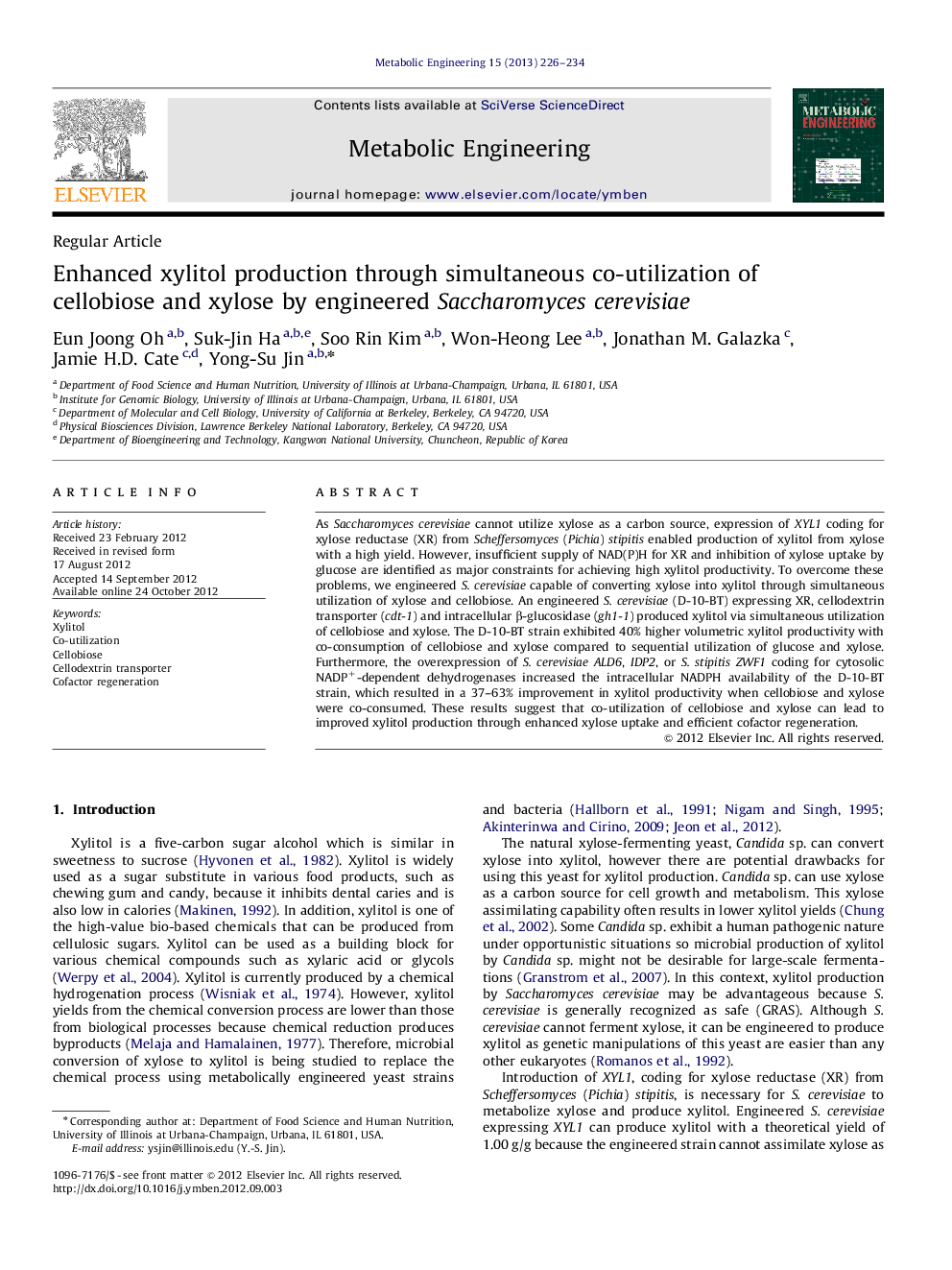| Article ID | Journal | Published Year | Pages | File Type |
|---|---|---|---|---|
| 31666 | Metabolic Engineering | 2013 | 9 Pages |
As Saccharomyces cerevisiae cannot utilize xylose as a carbon source, expression of XYL1 coding for xylose reductase (XR) from Scheffersomyces (Pichia) stipitis enabled production of xylitol from xylose with a high yield. However, insufficient supply of NAD(P)H for XR and inhibition of xylose uptake by glucose are identified as major constraints for achieving high xylitol productivity. To overcome these problems, we engineered S. cerevisiae capable of converting xylose into xylitol through simultaneous utilization of xylose and cellobiose. An engineered S. cerevisiae (D-10-BT) expressing XR, cellodextrin transporter (cdt-1) and intracellular β-glucosidase (gh1-1) produced xylitol via simultaneous utilization of cellobiose and xylose. The D-10-BT strain exhibited 40% higher volumetric xylitol productivity with co-consumption of cellobiose and xylose compared to sequential utilization of glucose and xylose. Furthermore, the overexpression of S. cerevisiae ALD6, IDP2, or S. stipitis ZWF1 coding for cytosolic NADP+-dependent dehydrogenases increased the intracellular NADPH availability of the D-10-BT strain, which resulted in a 37–63% improvement in xylitol productivity when cellobiose and xylose were co-consumed. These results suggest that co-utilization of cellobiose and xylose can lead to improved xylitol production through enhanced xylose uptake and efficient cofactor regeneration.
► Co-utilization of cellobiose and xylose was able to support enhanced xylitol production. ► The co-fermenting strain showed higher xylitol productivity compared to sequential utilization. ► Overexpression of NADPH producing enzymes facilitated improved xylitol production. ► Economic production of xylitol from cellulosic hydrolysates will be feasible.
